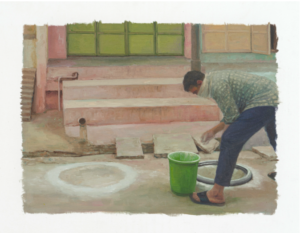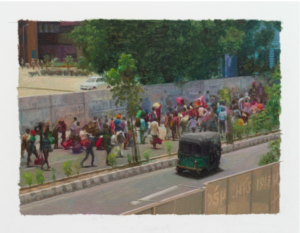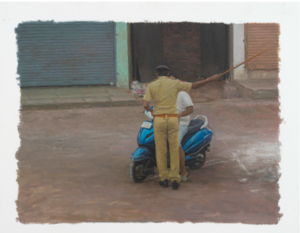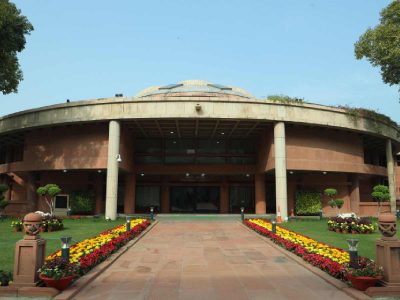Abir Karmakar’s artistic interpretations of the effect of the pandemic on the lives of millions is an attempt to keep the memories alive. Lest we forget
“This story of the pandemic in our country is much larger than the virus. As one half of the nation tries to escape death by apathy, how can we not weep blood?” questions author Archana Pidathala responding to Abir Karmakar’s artworks.
It was the images of the pandemic in local newspapers that caught Gujarat-based artist Karmakar’s attention. Despite being low in quality, it was, in fact, the graininess of the images shot on mobiles and reproduced in print media that stood out for him.

Inspired by these, he set out to work on his series of paintings that quite realistically depict the various facets of the unfolding situation. His works are presented by Galleryske as part of the second edition of In Touch — a digital platform created in partnership between twelve galleries from India and Dubai to present online exhibitions.
Karmakar started this series titled ‘History Painting’ around mid-April. Initially, he went through a lot of images in local Gujarati newspapers along with that of national newspapers. “I found a few images which were not of good resolution, but they spoke something about the place. It had a certain rawness in them. I found it more grounded, as compared to images in national newspapers,” says Karmakar.
The quality of the low-resolution works spoke to him and he felt the urge to address the situation differently. “This is happening in my life and somehow every person is directly or indirectly suffering from it. As an artist and also a concerned citizen I was trying to work on a different project in this concern, but it was not working out.”

Luckily his studio is in his home, hence he went ahead with his creations. His recent works are quite different from his past work, both in format and language. As compared to the kind of canvases he has been doing for the past four years, one can easily see the shift in the language of his work and also the dimension.
“Looking at my earlier works you will notice that the treatment of my work has changed. The pigment application, the sketchiness have been changed consciously.”
He has decided to ditch his usual large-scale works for some smaller works. “It’s more on an intimate level,” he explains.
Another reason for the reduction of size is the unavailability of adequate painting paraphernalia. Karmakar had to make do with the limited number of canvases and materials available in the studio.

The resource constraints do not make his paintings any less impactful. They realistically document the new normal we are living in. From workers sanitising roads in full PPE kits, deserted streets and railway stations, to the police admonishing a rider out with his scooter, his works have captured all the nuances. Giving us a look at the grimmer side of the situation, his work also depicts the plights of migrant workers as scores of people walk in lines trudging along with their belongings.
“As someone who is witnessing the entire situation first hand, there is certain storytelling and narration in my works which gives it a feeling of a ground level. From people suffering to people adjusting to the new normal, they depict different aspects.”
Karmakar shares that his attempt is not to make a comment on the situation, but to engrave it in the viewer’s mind. He hopes to evoke compassion and empathy among his viewers through his paintings.
“People have a short memory. After a few years, they will forget this. It should be documented and addressed in such a way that it will be there in people’s psyche. It will not be seen as just another information which is how it feels when you see the images in the newspaper.”
Explaining the title ‘History Painting’, he refers to the genre of painting under the same name. As a student of painting, he was quite familiar with the term. Yet unlike the rules of this genre, his current work does not cater to the format or language that is associated with it. Rather it’s just an extension of the practice of depicting a historical situation.
“It is more like history in the making. The attempt here is to give it a new dimension, and hence the title.
The first part of the series is on display and he plans on continuing the series, in the same format.
The exhibition can be viewed on the website of Art In Touch
(Cover: Abir Karmakar’s series – History Painting)





